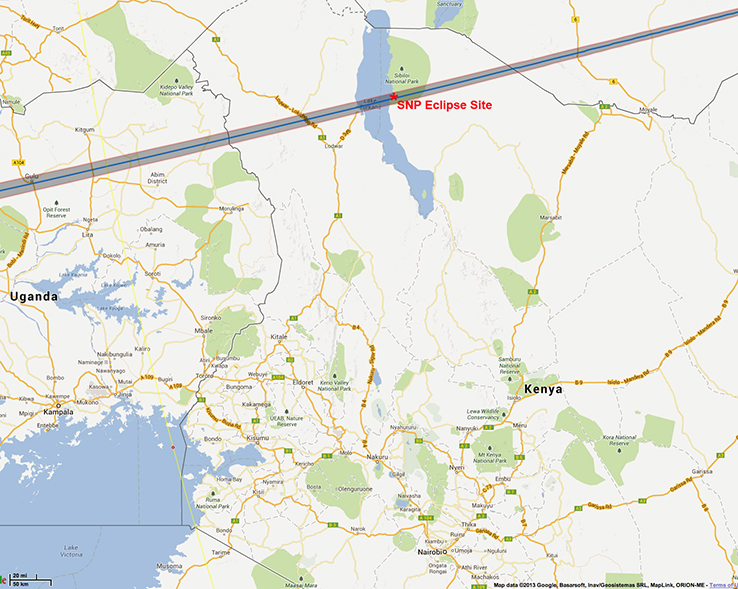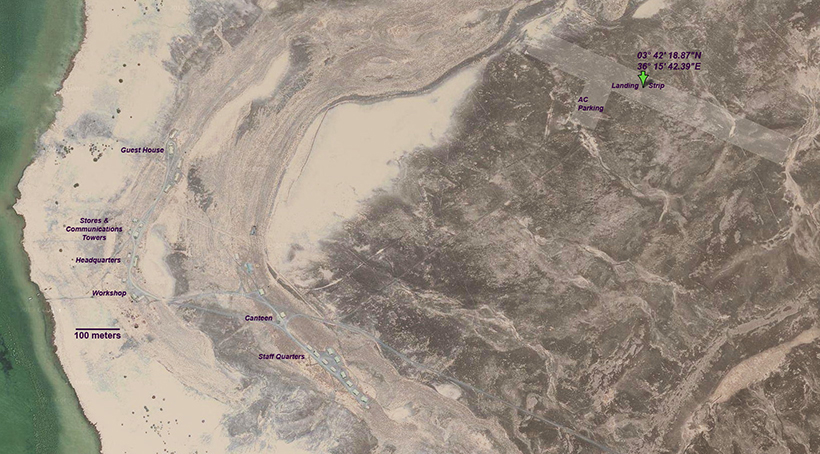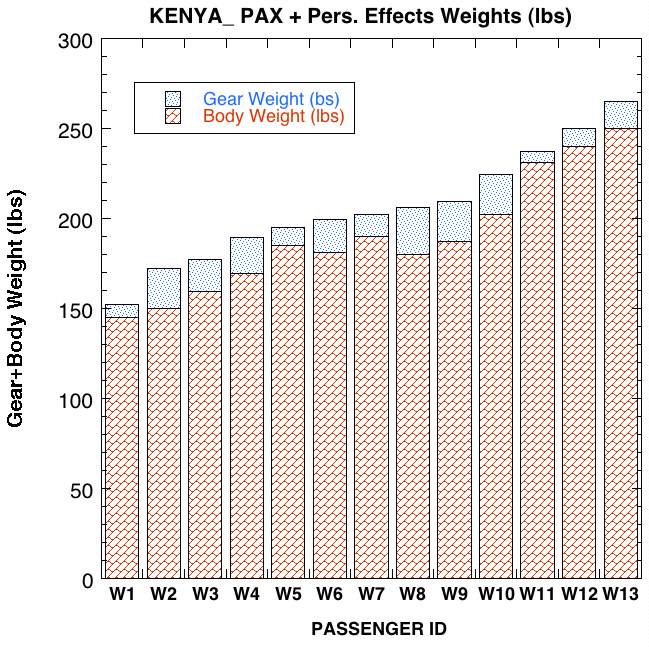03 November 2013 -- Total Solar Eclipse
Sibiloi National Park - Lake Turkana, Kenya
Glenn Schneider
(Last update: 28 August 2013)
(Last update: 28 August 2013)
A Solar Eclipse of a Different "Flavor"!
The upcoming
"hybrid" solar eclipse of 03 November 2013 begins at sunrise at 30°
26.8'N latitude, 71° 15.2'W longitude in the western Atlantic
Ocean. There, appx. 600 miles due east of the Florida coast at
Jacksonville, as the Sun ascends the horizon in annular eclipse, the
Moon will almost, but not fully,
cover the solar disk (the lunar-to-solar angular diameter ratio there
being "only" 0.999). Only 15 seconds later, at a point appx 256
miles further ESE, the lunar umbral shadow will come crashing down on
the Earth at nearly 4000 miles per hour. There, a pencil-beam of
darkness -- the Moon's umbral shadow -- will sweep over the horizon
extending back into space ~ 240,000 miles toward the Moon. It is
there that the lunar umbra will first touch our planet's surface at
11:05:33 UT at Lat 29.279°N, 67.205°W, with the eclipse
changing "flavor" from annular to total.
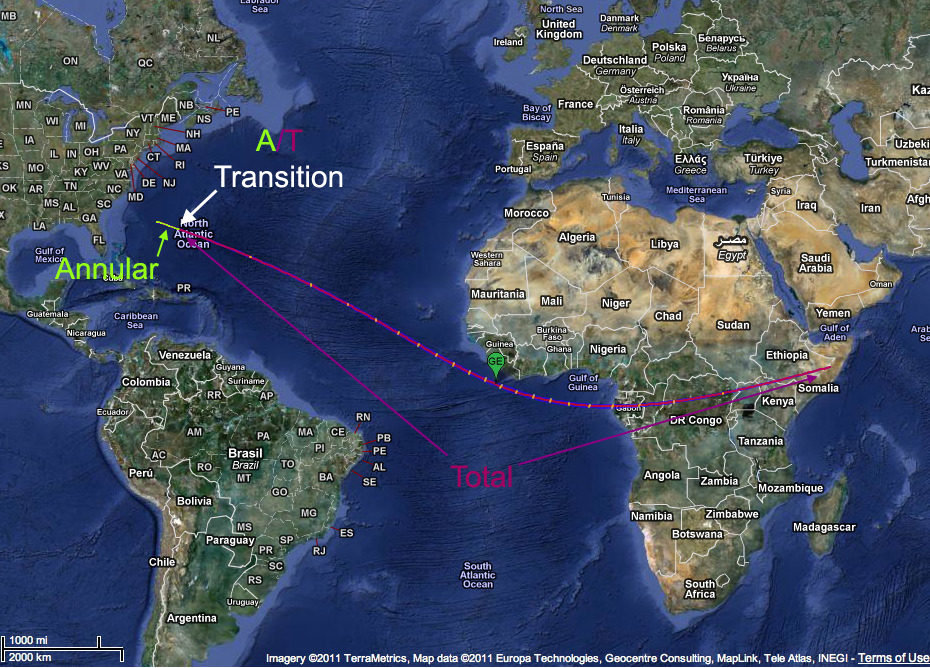
Centerline path of the 03 November 2013 A/T (aka "hybrid" eclipse).
Less than one in twenty central solar eclipses are of the (so-called) "hybrid" type that manifest themselves as total along part of their central path, but as annular elsewhere. At the point in space and time where such an eclipse changes from annular to total (or, in most cases also vice-versa), the long, conical, apex of the lunar umbral shadow just touches the surface of the Earth for an instant. There (only) the lunar and solar disks appear exactly the same angular diameter with the Sun then occulted in a stunningly spectacularly precise manner that has been witnessed by only a very fortunate few.
Such was the case for the 03 October 1986 central solar eclipse, observed by only nine people, in transition between totality and annularity that defied conventional "definitions" of totality despite the brief (nearly instantaneous) appearance of the solar corona. Then, and there, only, with the solar photosphere extincted and the magnificent corona revealed as in a "normal" total solar eclipse, the lunar-occulted Sun stood surrounded by a very-nearly complete chromospheric ring -- punctuated for only seconds in time by a dynamic dance of "Baily's beads" around the lunar limb. This was not an "annular" (photospheric) eclipse of circumferential sunlight - but with a perfectly-fit ring of chromospheric ) scarlet thread of scarlet (hydrogen-alpha) light circumscribing the ashen lunar silhouette.
The most recent opportunity to have viewed such an event occurred on 08 March 2005 in the mid-Pacific Ocean, but no ship, aircraft, or other conveyance transported eclipse-observers to either of its two "A/T" (and "T/A") transition points. From the few ships at sea on centerline, but falling short of these locations, an extended, greater than hemispheric, arc of chromosphere was seen during their relatively brief views of a glorious totality. The next such opportunity arises on 03 November 2013, with a "hybrid" eclipse of a bit of a different flavor.
Most (> 92%) of "hybrid" central eclipses are of the "annular-total-annular" (ATA) type, where the Moon comes close enough to the Earth to give rise to a total eclipse in the mid-part of the eclipse track usually with the Sun highest in the sky, and transition points flanking the point of "greatest (total) eclipse. I.e., along the central part of an ATA eclipse path, there exists both pre- and post- maximum-eclipse transitions to, and from, totality. Much more rarely, only one solar eclipse of every 450, gives rise to a bifurcated "annular-total" (AT) type beginning at sunrise on centerline as annular, and ending at sunset as total, with a only a single point along the track where the angular diameter of the Sun and Moon are perfectly matched (the inverse "total-annular" being equally rare). The last such event was on 20 November 1854, but the next will happen soon -- on 03 November 2013 -- and then not again until 17 October 2179.
The singular A/T transition for the 03 November 2013 eclipse occurs in the Atlantic Ocean, appx 220 nautical miles south-south-west of Bermuda, and thereafter the central eclipse remains total. The path of totality of HSE 2013 extends from the A/T transition point across the Atlantic Ocean and traverses tropical/equatorial Africa from Gabon to Somalia. Maximum total eclipse will be appx 1m 39s in the eastern, equatorial, Atlantic Ocean south of Guinea. For those who prioritize duration of totality over risks of cloud-obscuration and other eclipse phenomenon, the maximum total eclipse will be appx 1m 39s in the eastern, equatorial, Atlantic Ocean south of Guinea - and a few ships will be headed to that location). Climate and cloud cover studies however, e.g., by Jay Anderson and others, along the path of totality across the Atlantic and Africa west of Uganda suggest poor to slim odds for viewing the eclipse due to cloud obscuration. (See this trans-African November afternoon average cloud cover map compiled by Anderson from CIMMS/NOAO satellite measurements). Landfall for the umbra occurs on the coast of Gabon where the duration of totality will be 1m 08s and declines across Africa to western Somalia where the Sun will set in a very brief ~ 1s duration totality at sunset.
On land, the best "chance" for viewing totality is at the eastern extremity of the path of totality at sunset in Somalia and across the border in south-east Ethiopia. The latter location could give an unprecedented view of a nearly perfectly "matched" lunar/solar angular diameter central solar eclipse on the horizon at sunset with the apex of the lunar umbral shadow lifting "up" into space at the instant of totality-- which would be a spectacular event to witness. Unfortunately, geo-politics precludes this possibility, of witnessing an eclipse entering T/A transition at sunset that also extends into the equally "challenging" Ogedan region of porously bordered eastern Ethiopia. Unfortunately, travel to Somalia (specifically for U.S. citizens, but others as well) is strongly contra-indicated by the U.S. State Department (see: http://travel.state.gov/travel/cis_pa_tw/tw/tw_5736.html and while travel to Addis Ababa (out of the path of totality) and SW Ethiopia is much less "risky", travel to the SE Ogedan region of Ethiopia where cloud cover declines (with also duration of totality and solar elevation) is ill-advised at best*. (Those considering that, may wish to keep up with recent events here: http://www.ogaden.com/ )
* Somali Region (Eastern Ethiopia): Travel to Ethiopia's Somali region, and to the cities of Harar and Jijiga, is restricted {fr U.S. citizens} for U.S. government employees. Since the mid-1990's, members of the Ogaden National Liberation Front (ONLY) have conducted attacks on civilian targets near the city of Harar and in the Somali regional state, particularly in the Ogaden zones. Expatriates have been killed in these attacks.
However, from "not too far" away (on astronomical scales!), in Northern Kenya just east of Lake Turkana in Sibiloi National Park, the width of the lunar umbra (center to edge) will have diminished to only 13 km. Such a narrow shadow cone can give stunning views of its approach (with dependency on solar altitude, and sky conditions, e.g. see below).
Serendipitously, the weather prospects for eclipse-viewing unobscured by cloud (and partially mitigated in residual with the logistically viable use of a light aircraft) is best from anywhere along the path of totality except in the travel-precluded zones at and near sunset, the mid-totality lunar/solar angular diameter ratio very closely approaching unity at mid-eclipse, but still giving rise to 11 seconds of Baily's-bead free totality. It is from here, in Sibiloi National Park in northern Kenya, that we plan to observe TSE 2013 with the anticipated appearance of a chromospheric-ring totality and stunning low-altitude (12°) horizon illumination from the rapidly sweeping passage of the umbral shadow.

Centerline path of the 03 November 2013 A/T (aka "hybrid" eclipse).
Less than one in twenty central solar eclipses are of the (so-called) "hybrid" type that manifest themselves as total along part of their central path, but as annular elsewhere. At the point in space and time where such an eclipse changes from annular to total (or, in most cases also vice-versa), the long, conical, apex of the lunar umbral shadow just touches the surface of the Earth for an instant. There (only) the lunar and solar disks appear exactly the same angular diameter with the Sun then occulted in a stunningly spectacularly precise manner that has been witnessed by only a very fortunate few.
Such was the case for the 03 October 1986 central solar eclipse, observed by only nine people, in transition between totality and annularity that defied conventional "definitions" of totality despite the brief (nearly instantaneous) appearance of the solar corona. Then, and there, only, with the solar photosphere extincted and the magnificent corona revealed as in a "normal" total solar eclipse, the lunar-occulted Sun stood surrounded by a very-nearly complete chromospheric ring -- punctuated for only seconds in time by a dynamic dance of "Baily's beads" around the lunar limb. This was not an "annular" (photospheric) eclipse of circumferential sunlight - but with a perfectly-fit ring of chromospheric ) scarlet thread of scarlet (hydrogen-alpha) light circumscribing the ashen lunar silhouette.
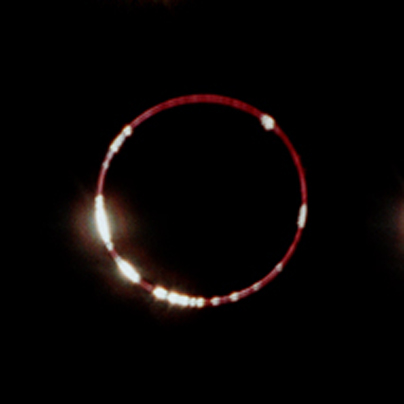 |
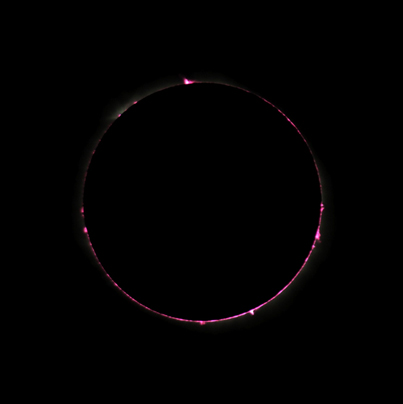 |
| A "diamond
tiara" of Baily's Beads dances around the lunar limb against a ring of
crimson chromosphere as seen during HSE
1986 very near the A/T transition point. The appearance and
prevalence of the Beads can be "tuned" by optimally and precisely
locating observers relative to this point. |
HSE 2005, as
planned for HSE 2013 was also observed from sea, but from within its
zone of totality. There, an extended arc (but there not quite full
ring) of chromosphere partially obscured by the lunar limb, was seen
interior to the corona as shown in photos HERE.
(Photo by William Widdon) |
The most recent opportunity to have viewed such an event occurred on 08 March 2005 in the mid-Pacific Ocean, but no ship, aircraft, or other conveyance transported eclipse-observers to either of its two "A/T" (and "T/A") transition points. From the few ships at sea on centerline, but falling short of these locations, an extended, greater than hemispheric, arc of chromosphere was seen during their relatively brief views of a glorious totality. The next such opportunity arises on 03 November 2013, with a "hybrid" eclipse of a bit of a different flavor.
Most (> 92%) of "hybrid" central eclipses are of the "annular-total-annular" (ATA) type, where the Moon comes close enough to the Earth to give rise to a total eclipse in the mid-part of the eclipse track usually with the Sun highest in the sky, and transition points flanking the point of "greatest (total) eclipse. I.e., along the central part of an ATA eclipse path, there exists both pre- and post- maximum-eclipse transitions to, and from, totality. Much more rarely, only one solar eclipse of every 450, gives rise to a bifurcated "annular-total" (AT) type beginning at sunrise on centerline as annular, and ending at sunset as total, with a only a single point along the track where the angular diameter of the Sun and Moon are perfectly matched (the inverse "total-annular" being equally rare). The last such event was on 20 November 1854, but the next will happen soon -- on 03 November 2013 -- and then not again until 17 October 2179.
The singular A/T transition for the 03 November 2013 eclipse occurs in the Atlantic Ocean, appx 220 nautical miles south-south-west of Bermuda, and thereafter the central eclipse remains total. The path of totality of HSE 2013 extends from the A/T transition point across the Atlantic Ocean and traverses tropical/equatorial Africa from Gabon to Somalia. Maximum total eclipse will be appx 1m 39s in the eastern, equatorial, Atlantic Ocean south of Guinea. For those who prioritize duration of totality over risks of cloud-obscuration and other eclipse phenomenon, the maximum total eclipse will be appx 1m 39s in the eastern, equatorial, Atlantic Ocean south of Guinea - and a few ships will be headed to that location). Climate and cloud cover studies however, e.g., by Jay Anderson and others, along the path of totality across the Atlantic and Africa west of Uganda suggest poor to slim odds for viewing the eclipse due to cloud obscuration. (See this trans-African November afternoon average cloud cover map compiled by Anderson from CIMMS/NOAO satellite measurements). Landfall for the umbra occurs on the coast of Gabon where the duration of totality will be 1m 08s and declines across Africa to western Somalia where the Sun will set in a very brief ~ 1s duration totality at sunset.
On land, the best "chance" for viewing totality is at the eastern extremity of the path of totality at sunset in Somalia and across the border in south-east Ethiopia. The latter location could give an unprecedented view of a nearly perfectly "matched" lunar/solar angular diameter central solar eclipse on the horizon at sunset with the apex of the lunar umbral shadow lifting "up" into space at the instant of totality-- which would be a spectacular event to witness. Unfortunately, geo-politics precludes this possibility, of witnessing an eclipse entering T/A transition at sunset that also extends into the equally "challenging" Ogedan region of porously bordered eastern Ethiopia. Unfortunately, travel to Somalia (specifically for U.S. citizens, but others as well) is strongly contra-indicated by the U.S. State Department (see: http://travel.state.gov/travel/cis_pa_tw/tw/tw_5736.html and while travel to Addis Ababa (out of the path of totality) and SW Ethiopia is much less "risky", travel to the SE Ogedan region of Ethiopia where cloud cover declines (with also duration of totality and solar elevation) is ill-advised at best*. (Those considering that, may wish to keep up with recent events here: http://www.ogaden.com/ )
* Somali Region (Eastern Ethiopia): Travel to Ethiopia's Somali region, and to the cities of Harar and Jijiga, is restricted {fr U.S. citizens} for U.S. government employees. Since the mid-1990's, members of the Ogaden National Liberation Front (ONLY) have conducted attacks on civilian targets near the city of Harar and in the Somali regional state, particularly in the Ogaden zones. Expatriates have been killed in these attacks.
However, from "not too far" away (on astronomical scales!), in Northern Kenya just east of Lake Turkana in Sibiloi National Park, the width of the lunar umbra (center to edge) will have diminished to only 13 km. Such a narrow shadow cone can give stunning views of its approach (with dependency on solar altitude, and sky conditions, e.g. see below).
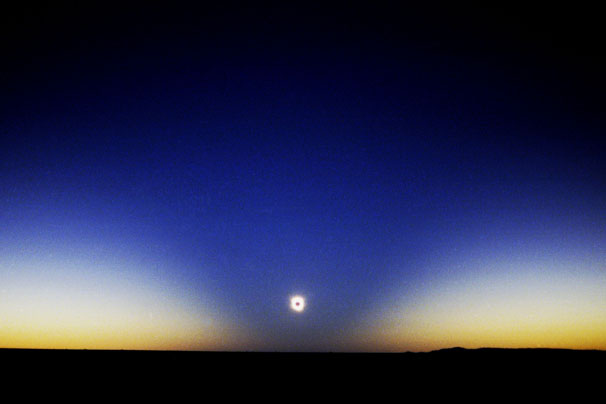 |
| The visual aspect of the narrow
lunar shadow conic 32 km wide from TSE 2002 framing the eclipsed Sun
(here 4° above the horizon, TSE 2013 will be 12°) and
stretching "back" as seen perspectively toward the Moon. The apex
of our HSE 2013 shadow will converge at our location to half that
width. potentially giving rise to an "inverse searchlight" beam of
darkness sweeping over the horizon and enveloping eclipse watchers.
(Photo by Carter Roberts) |
Serendipitously, the weather prospects for eclipse-viewing unobscured by cloud (and partially mitigated in residual with the logistically viable use of a light aircraft) is best from anywhere along the path of totality except in the travel-precluded zones at and near sunset, the mid-totality lunar/solar angular diameter ratio very closely approaching unity at mid-eclipse, but still giving rise to 11 seconds of Baily's-bead free totality. It is from here, in Sibiloi National Park in northern Kenya, that we plan to observe TSE 2013 with the anticipated appearance of a chromospheric-ring totality and stunning low-altitude (12°) horizon illumination from the rapidly sweeping passage of the umbral shadow.
The Eclipse Site – Location and Eclipse Circumstances
